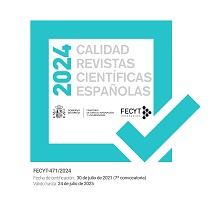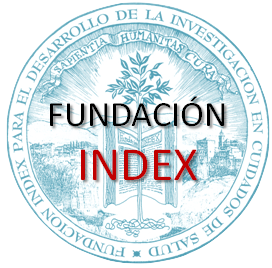The perceptions of nursing students regarding the safe administration of medications
Abstract
Objective: The purpose of this review was to identify the perceptions of nursing students about the safe administration of medications.
Method: Original empirical research that describes a method to incorporate concepts of safety in the administration of medicines in nursing education and examine the perceptions of nursing students for review. A search of four electronic databases (Scopus, Cumulative Index to Nursing and Allied Health Literature, MedLine / PubMed and Google Scholar), as well as a manual search to identify original research published between 2017 and 2021. Analysis guidelines were adopted (PRISMA) as the preferred reporting element for systematic reviews and meta-analyzes.
Results: Twelve original research articles were included for review. Two methods were identified for incorporating safety in the administration of medications in nursing education: process factors or systems in the clinical setting and educational factors in the academic setting. The use of interventions varied, but all focused on analyzing students' experiences to promote skills and knowledge in different settings (academic and clinical).
Conclusion: Nursing educators must promote theory and clinical experiences in a comprehensive way so that the student learns and internalizes the attitudes, behaviors and values of the profession with a focus of responsibility in all aspects. The perception and training of students could lead to changes in the way drugs are administered, as well as decrease the rate of adverse events in the future.
Downloads
-
Abstract1738
-
PDF (Español (España))1551
-
PDF1551
References
Slawomirski L, Auraaen A, Klazinga N. París, Francia: Organización para la Cooperación y el Desarrollo Económicos; 2018. Disponible en:
http://www.oecd.org/health/health- systems/The-Economics-of-Patient-Safety-in-Primary-and-Ambulatory-Care-April2018.pdf, (accessed 23 June 2021).
Aitken, Murray y Gorokhovich, Lyudmila, Advancing the Responsible Use of Medicines: Applying Levers for Change (17 de septiembre de 2012). Disponible en SSRN: http://dx.doi.org/10.2139/ssrn.2222541
Sung YH, Kwon IG, Ryu E. Blended learning on medication administration for new nurses: integration of e-learning and face-to-face instruction in the classroom. Nurse Educ Today. 2008;28(8):943-952. https://doi.org/ 10.1016 / j. nedt.2008.05.007.
Mansour M, James V, Edgley A. Investigating the safety of medication administration in adult critical care settings. Nurs Crit Care. 2012;17(4):189-197. doi:10.1111/j.1478-5153. https://doi.org/ 10.1111 / j.1478-5153.2012.00500. x.
Thomas B, Paudyal V, MacLure K, et al. Medication errors in hospitals in the Middle East: a systematic review of prevalence, nature, severity and contributory factors. Eur J Clin Pharmacol. 2019;75(9):1269-1282. https://doi.org/ 10.1007 / s00228-019-02689-y.
Wang HF, Jin JF, Feng XQ, et al. Quality improvements in decreasing medication administration errors made by nursing staff in an academic medical center hospital: a trend analysis during the journey to Joint Commission International accreditation and in the post-accreditation era. Ther Clin Risk Manag. 2015; 11:393-406. https://doi.org/ 10.2147 / TCRM.S79238.
Bacon O, Hoffman L. System-Level Patient Safety Practices That Aim to Reduce Medication Errors Associated with Infusion Pumps: An Evidence Review. J Patient Saf. 2020;16(3S Suppl 1): 42-47. https: // doi. org / 10.1097 / PTS.0000000000000722.
Johnson J, Kareem A, White D, et al. Nursing students' perspectives on learning math for medication calculations in a Canadian nursing program in Qatar. Nurse Educ Pract. 2020; 49:102885. https://doi.org/10.1016/j.nepr.2020.102885.
Westbrook JI, Li L, Shah S, et al. A cross-country time and motion study to measure the impact of electronic medication management systems on the work of hospital pharmacists in Australia and England. Int J Med Inform. 2019; 129:253-259 https://doi.org/10.1016/j.ijmedinf.2019.06.011.
Urrútia G, Bonfill X. Declaración PRISMA: una propuesta para mejorar la publicación de revisiones sistemáticas y metaanálisis [PRISMA declaration: a proposal to improve the publication of systematic reviews and meta-analyses]. Med Clin (Barc). 2010;135(11):507-511. https://doi.org/ 10.1016 / j. medcli.2010.01.015.
Tricco AC, Lillie E, Zarin W, et al. PRISMA Extension for Scoping Reviews (PRISMA-ScR): Checklist and Explanation. Ann Intern Med. 2018;169(7):467-473. https://doi.org/ 10.7326/M18-0850.
Hsieh HF, Shannon SE. Three approaches to qualitative content analysis. Qual Health Res. 2005;15(9):1277-1288. https://doi.org/10.1177/104973230527668.
Musharyanti L, Claramita M, Haryanti F, Dwiprahasto I. Why do nursing students make medication errors? A qualitative study in Indonesia. J Taibah Univ Med Sci. 2019;14(3):282-288. https://doi.org/10.1016/j.jtumed.2019.04.002.
Bickel AE, Villasecas VX, Fluxá PJ. Characterization of adverse events occurring during nursing clinical rotations: A descriptive study. Nurse Educ Today. 2020; 84:104224. https://doi.org/10.1016/j.nedt.2019.104224
García-Gámez M, Morales-Asencio JM, García-Mayor S, et al. Adverse events encountered during clinical placements by undergraduate nursing students in Spain [published online ahead of print, 2020 May 22]. Nurse Educ Today. 2020; 91:104480. https://doi.org/10.1016/j.nedt.2020.104480.
Craig SJ, Kastello JC, Cieslowski BJ, Rovnyak V. Simulation strategies to increase nursing student clinical competence in safe medication administration practices: A quasi-experimental study. Nurse Educ Today. 2021; 96:104605.https://doi.org/10.1016/j.nedt.2020.104605.
Kuo SY, Wu JC, Chen HW, Chen CJ, Hu SH. Comparison of the effects of simulation training and problem-based scenarios on the improvement of graduating nursing students to speak up about medication errors: A quasi-experimental study. Nurse Educ Today. 2020; 87:104359. https://doi.org/10.1016/j.nedt.2020.104359.
Thelen MA. The impact of online synchronous simulated clinical immersions on nursing students' pharmacology self-efficacy: A pre-test post-test intervention pilot study. Nurse Educ Today. 2021; 100:104833. https://doi.org/10.1016/j.nedt.2021.104833.
Avraham R, Shor V, Kimhi E. The influence of simulated medication administration learning on the clinical performance of nursing students: A comparative quasi-experimental study. Nurse Educ Today. 2021; 103:104947. https://doi.org/10.1016/j.nedt.2021.104947.
Pourteimour S, Hemmati-MalsakPak M, Jasemi M, Eghtedar S, & Parizad N.The Effect of Smartphone-Based Application Learning on the Nursing Students' Performance in Preventing Medication Errors in the Pediatric Units. Pediatric Quality & Safety,2019; 4(6), 226. https://doi.org/10.1097/pq9.0000000000000226.
Walsh LJ, Anstey AJ, Tracey AM. Student perceptions of faculty feedback following medication errors - A descriptive study. Nurse Educ Pract. 2018; 33:10-16. https://doi.org/10.1016/j.nepr.2018.08.017.
Preston P, Leone-Sheehan D, Keys B. Nursing student perceptions of pharmacology education and safe medication administration: A qualitative research study. Nurse Educ Today. 2019; 74:76-81. https://doi.org/10.1016 / j. nedt.2018.12.006.
Caboral-Stevens M, Ignacio RV, Newberry G. Undergraduate nursing students' pharmacology knowledge and risk of error estimate. Nurse Educ Today. 2020; 93:104540. https://doi.org/10.1016/j.nedt.2020.104540.
Chiarini M, De Vita E, Meggiolaro A, et al. Errori in medicina: la percezione degli studenti in Infermieristica di Roma [Errors in Medicine: perceptions of nursing students in Rome]. Prof Inferm. 2017;70(4):206-213. https://doi.org/10.7429/pi.2017.704206.
Lorraine K, Apsay G, Geselle G. Nursing medication errors perceived by nursing students in Iligan City. Belitung Nursing Journal, 2018; 4 (6), 537-544. https://doi.org/10.33546/bnj.566.
Asensi-Vicente J, Jiménez-Ruiz I, Vizcaya-Moreno F. Errores de medicación en estudiantes de enfermería: una revisión sistemática. Enfermera Educ. 2018; 43 (51): 1-5. https: // doi. org / 10.1097 /NNE.00000000000000000481.
Lawrence K, Messias, DKH, Cason ML.The influence of simulation experiences on new nuses' clinical judgment. Clinical Simulation in Nursing, 2018; 25:22-27. https://doi.org/10.1016 / j. ecns.2018.10.008.
Stevens CM, Ignacio VR, Newberry G. Conocimientos de farmacología de estudiantes de licenciatura en enfermería y estimación del riesgo de error. La educación en enfermería hoy,2020; 93,104540. https://doi.org/10.1016/j.nedt.2020.104540.
Kim SJ, Shin H, Lee J, Kang S, Bartlett R. A smartphone application to educate undergraduate nursing students about providing care for infant airway obstruction. Nurse Educ Today. 2017; 48:145-152. https://doi.org/ 10.1016 / j. nedt.2016.10.006.
Baginski MN. Use of Low-Fidelity Simulation Within a Medication Calculation Nursing Course to Enhance Students' Understanding of Accuracy. Nurse Educ. 2017;42(3):110-111. https: // doi. org / 10.1097 / NNE.0000000000000334.
Nielsen T, Makransky G, Vang ML, Dammeyer J. How specific is the specific self...efficacy? A construct validity study using rasch measurement models. Studies in Educational Evaluation, 2017; 53 (1):87-97. https://doi.org/10.1016/j.stueduc.2017.04.003.
Mackie J. Case studies in a flipped classroom: an approach to support nursing learning in pharmacology and pathophysiology. Journal of Advanced Nursing,2018; 4 (2): 1-16. https://doi.org/10.17483/2368-6669.1139.
Williams B, Dousek S. The simulation experience satisfaction scale (SSES): a validation study. Nurse Education in Practice, 2012;2 (3):74-80. https://doi.org/10.5430/jnep.v2n3p74.
Mariani B, Ross J, Paparella S, Allen L. Medication safety simulation to assess student knowledge and competence. Clinical Simulation in Nursing, 2017;13 (5): 210–216. https://doi.org/ 10.1016 / j. ecns.2020.12.003.
Armstrong GE, Dietrich M, Norman L, Barnsteiner J, Mion L. Nurses' Perceived Skills and Attitudes About Updated Safety Concepts: Impact on Medication Administration Errors and Practices. J Nurs Care Qual. 2017;32(3):226-233. https://doi.org/10.1097/NCQ.000000000000226.
Naureckas Li C, Camargo CA Jr, Faridi M, et al. Medication Education for Dosing Safety: A Randomized Controlled Trial. Ann Emerg Med. 2020;76(5):637-645. https://doi.org/10.1016/j.annemergmed.2020.07.007.
The works published in this magazine are subject to the following terms:
1. The Publications Service of the University of Murcia (the publisher) preserves the copyright of the published works, and encourages and allows the reuse of the works under the license for use stated in point 2.
© Servicio de Publicaciones, Universidad de Murcia, 2011 (© Publications Service, University of Murcia, 2011)
2. The works are published in the electronic edition of the journal under Creative Commons Reconocimiento-NoComercial-SinObraDerivada 3.0 España(texto legal) “ a Attribution-NonCommercial-NoDerivatives 3.0 Spain license (legal text)”. They can be copied, used, broadcasted, transmitted and publicly displayed, provided that: i) the authorship and original source of their publication (journal, publisher and URL) are cited; (ii) are not used for commercial purposes; iii) the existence and specifications of this license is mentioned.
3. Conditions of self-archiving. Authors are allowed and encouraged to electronically disseminate the pre-print (pre-reviewed ) and / or post-print (reviewed and accepted for publication) versions of their works prior to publication, as it ensures a wider circulation and dissemination which may lead to a possible increase in its mention and a higher scope among the academic community. RoMEO color: green.












